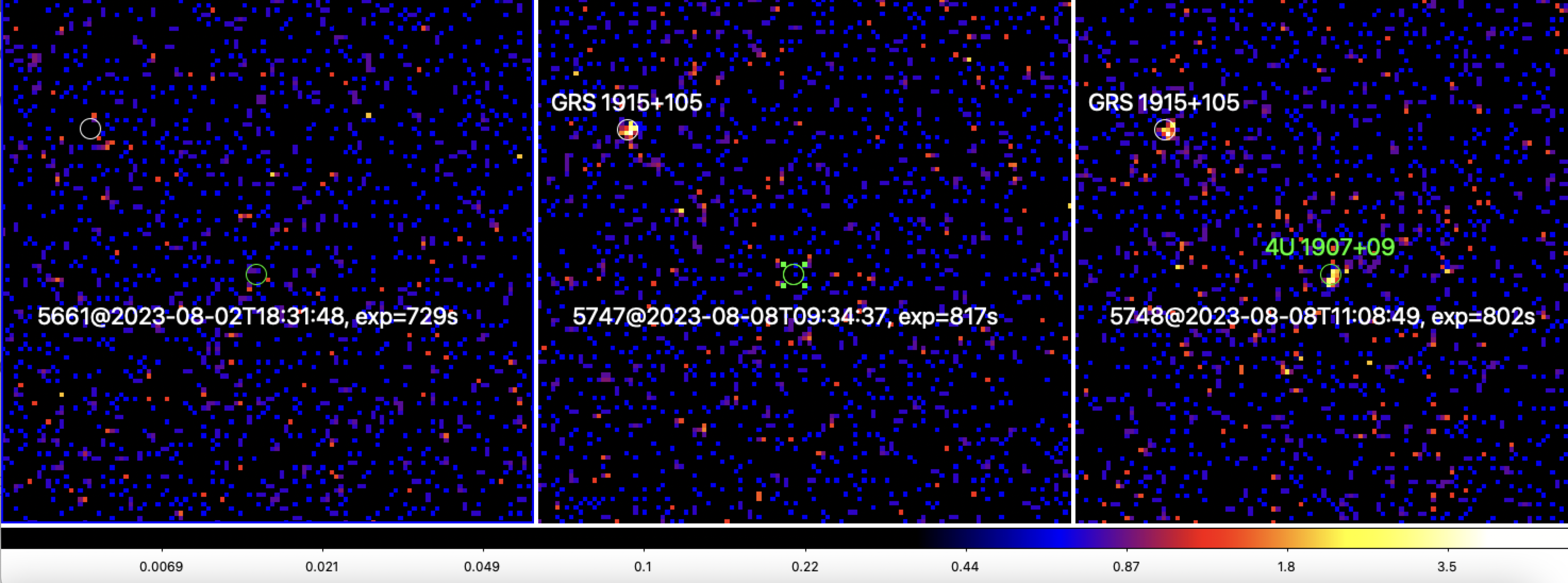LEIA detected brightening from 4U 1907+09 and GRS 1915+105
LEIA detected the brightening of the X-ray binaries 4U 1907+09 and GRS 1915+105 on August 8 2023. The detected source positions by LEIA are R.A. = 287.457 deg, DEC = 9.783 deg (uncertainty = 7.3 arcmin, 90% C.L. statistical and systematic) and R.A. = 288.787 deg, DEC = 10.937 deg (uncertainty = 2.3 arcmin, 90% C.L. statistical and systematic), which are spatially consistent with 4U 1907+09 and GRS 1915+105, respectively.
4U 1907+09 and GRS 1915+105 remained undetected in all previous observations of LEIA with a typical cadence of ~10 days and a typical exposure time of ~700s from this April, indicating an upper limit of ~ 4e-11 erg/s/cm2. 4U 1907+09 was first detected in the latest observation at 2023-08-08T11:08:49. Assuming a spectral shape of absorbed powerlaw with a photon index of 1.1 and NH of 3e+22 cm-2 (Ferrigno et al. 2022, A&A, 664, A99), its unabsorbed 0.5 - 4.0 keV flux is (3.7 +/- 1.6)e-10 erg/s/cm2, which is comparable to the brightest soft X-ray flux as recorded by Swift in an outburst in 2015 August.
GRS 1915+105 was detected in the last two observations at 2023-08-08T09:34:37 and 2023-08-08T11:08:49, respectively. Assuming a spectral shape of absorbed powerlaw with NH=5e+22 cm-2 and a photon index of 1.7 (Peris et al. 2016, ApJ, 822, 60), the unabsorbed 0.5 - 4.0 keV fluxes are (7.8 +/- 2.8)e-10 erg/s/cm2 and (6.2 +/- 2.8)e-10 erg/s/cm2, respectively.

The preliminary results have been posted at Astronomer's Telegram as ATel 16180. Click here for more EP/LEIA Astronomer's Telegrams.